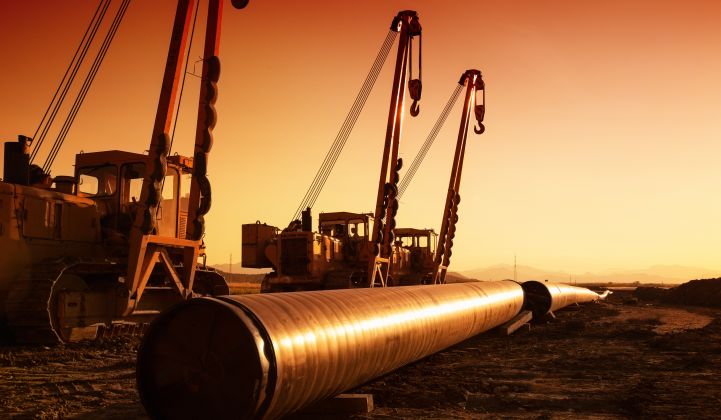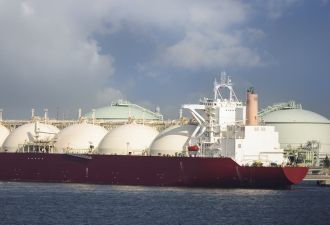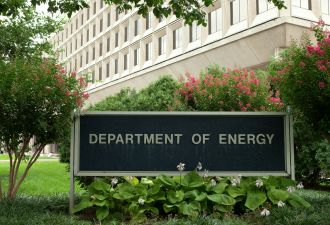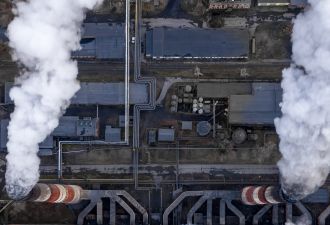Justin Guay is director for global climate strategy at the Sunrise Project.
***
The only climate trend more powerful for global financial institutions than the drive to achieve net-zero emissions by 2050 is the momentum to exit oil and gas. According to the Institute for Energy Economics and Financial Analysis (IEEFA), more than 50 globally significant financial institutions have put in place an oil and gas exit policy. For those who are counting, there are now more new policies being announced seeking to limit exposure to the oil and gas industry than those targeted at the moribund coal industry. In fact, in 2020, during the middle of a global pandemic and its associated recession, these policies were announced at a pace of one every month. The writing, as they say, is on the wall for oil and gas.
The problem is that despite this momentum, even sophisticated investors lack the breadth and depth of commitment to avoid the vast majority of speculative oil and gas investments. Instead, most oil and gas policies in the IEEFA database are exceedingly narrowly focused on removing financing for extreme projects (e.g., tar sands and Arctic drilling), which still leaves room for everything else under the sun. That includes midstream and downstream infrastructure like pipelines, liquefied natural gas terminals and a wave of ethane crackers driving a global plastic pollution crisis. It also means industries like utilities and auto manufacturers that make up the bulk of demand for oil and gas. So while it’s important that the trend has begun, it’s more important that we get the details of these oil and gas exit policies right.
Oil and gas pipelines are a case study in the risk of getting these policies wrong. According to Global Energy Monitor (GEM), there are nearly as many planned expansions of oil and gas pipelines in the world today as kilometers of highway in the United States — 212,000, to be exact. That new oil and gas infrastructure, if realized, would support a lifetime increase in oil and gas emissions of 170 gigatons, or roughly 28 years of current U.S. emissions — nearly the emissions of the currently operating global coal plant fleet.
These pipelines are not just a climate disaster; they’re a looming financial disaster as well. GEM estimates current global pipeline plans represent nearly $1 trillion in new investment. That’s money that is desperately seeking demand that won’t materialize if we’re to believe leading analysts who say that oil demand has peaked, leading public financial institutions declaring the age of methane gas to be over, ratings agencies that are downgrading the industry and leading investors that are either aggressively divesting or letting the financial world know that they plan to do so.
Despite these warnings, however, plenty of financial institutions appear not to be paying attention. While many of the investors in these pipelines are state-backed and likely state-bankrolled, at least three of the top 15 developers are publicly listed U.S.-based companies. That’s not surprising, given that the United States has the ignominious claim to fame of being the world’s largest driver of pipeline expansion as measured by capacity — even if a new administration focused on revoking oil and gas leases, ending overseas fossil fuel finance and taking many more steps to limit fossil fuel expansion may put this investment at risk.
While financial institutions have reached the consensus that financing new coal infrastructure is just plain dumb, they appear to have not yet updated that consensus to include oil and gas. As long as pipelines, liquefied natural gas terminals, ethane crackers, new gas plants and more are slipping through the cracks of weak policies, we’re headed toward a systemic financial reckoning that will make the meltdown of 2008 look like a picnic in comparison. Indeed, it’s why U.S. financial regulators are waking up to the need to regulate these speculative investments.
But while regulation may be on its way, financial institutions must act now to tighten up their policies to reduce the availability of, and increase the cost for, capital provided to the oil and gas industry. Announcing a new but narrow oil and gas policy and expecting to avoid the mounting financial risks, growing reputational damage, and the looming regulatory threat is its own pipe dream. We’ll know they’ve done their job when leading pipeline companies like Plains GP Holding, leading plastics companies like Dow and leading methane gas plant builders like Duke Energy begin to feel the financial pinch just as much as oil industry giants including Exxon and Shell have.



